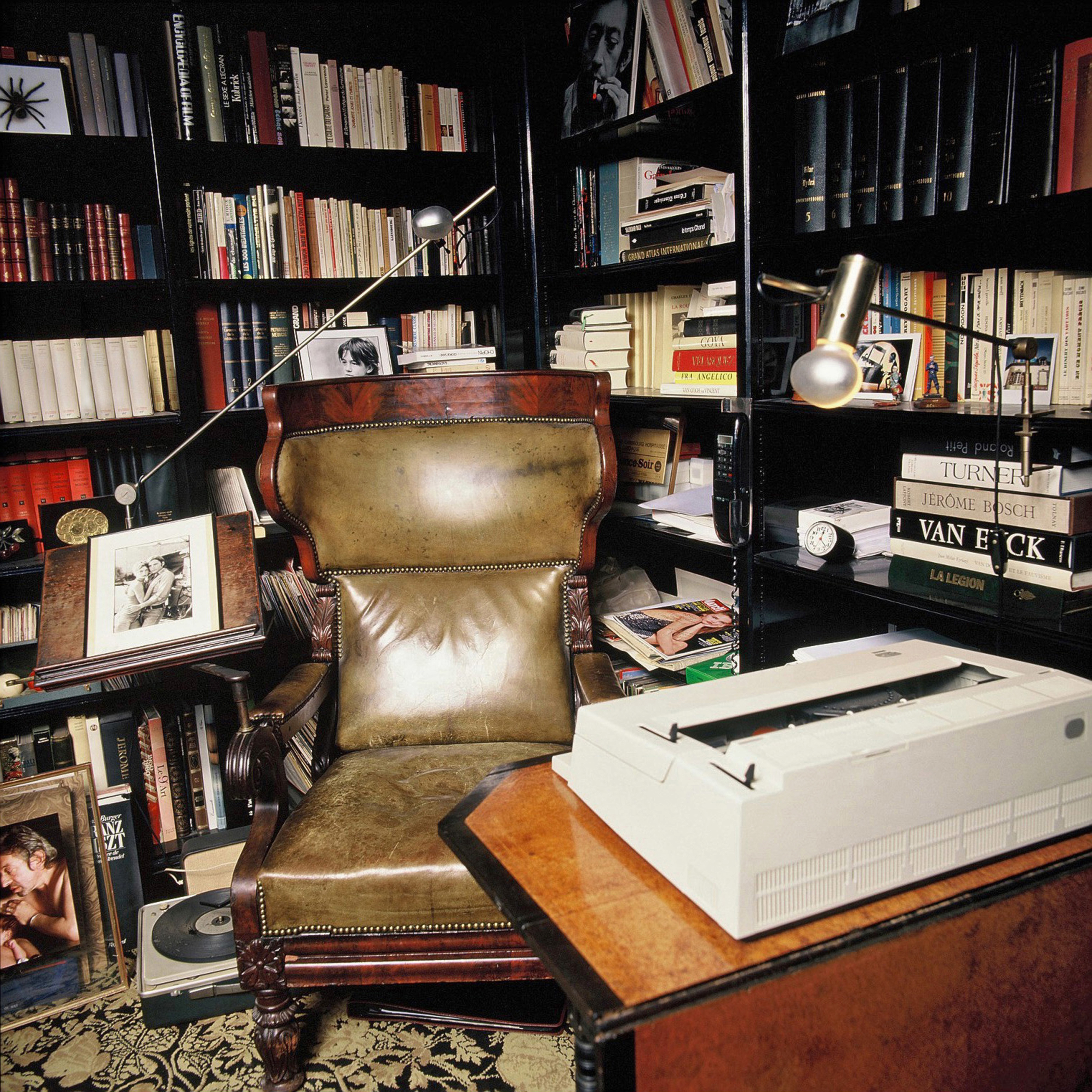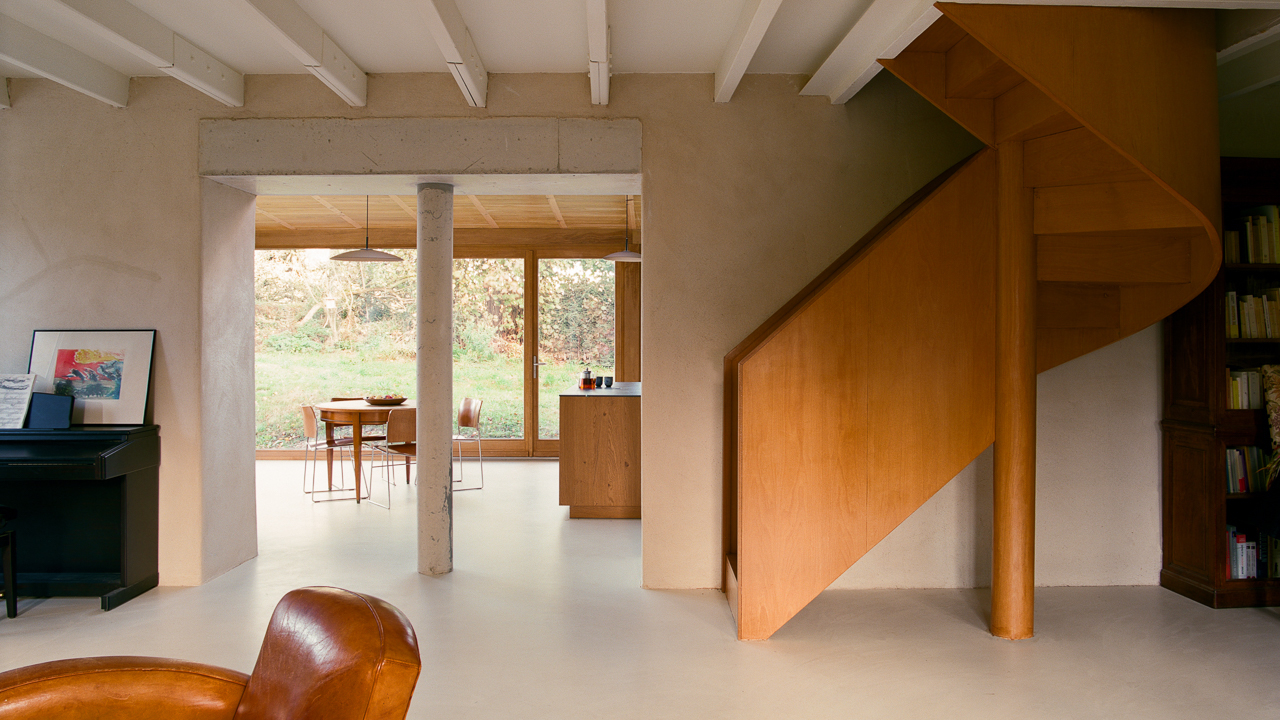Maison Gainsbourg opens in Paris, filled with Serge Gainsbourg’s stories
Maison Gainsbourg is a new museum, library/bookstore, and café/piano bar set in the former Paris home of Serge Gainsbourg

Serge Gainsbourg is as beloved by the French as Burgundy and Camembert. To most, he was a pop legend, highly provocative and carelessly debonair. To Charlotte Gainsbourg, he was a dad who cooked dinner and answered his own front door at his home on Rue de Verneuil.
Gainsbourg died in 1991 at age 62, of a heart attack, after a lifetime of partying and chain-smoking unfiltered Gitanes. Afterwards, Charlotte would visit him not at the cemetery but at this home in the 7th arrondissement: it became a place of pilgrimage for her, as it has been over the years for the countless fans who covered the wall out front with graffiti.
Charlotte knew that she wanted to share the house, and her memories, with his public, once she felt ready to do so. This month (September 2023), after more than 30 years, she is finally opening the doors to Maison Gainsbourg, along with those of a new museum, library/bookstore, and café/piano bar (the Gainsbarre) across the street.
Maison Gainsbourg

Visitors enter the house two at a time, their entrances timed so that they are practically alone. They are provided with headsets with a half-hour guided tour, pre-recorded by Charlotte in French or English, accompanied by a soundscape made of archives – the click of a Zippo lighter, the notes of a piano.
Gainsbourg bought the house in 1969, two years before Charlotte was born. She lived here with her dad, Jane Birkin (Charlotte’s mother), and Birkin’s elder daughter Kate. After Birkin moved out, in 1980, Charlotte came back to visit on weekends, spending time with her father, his subsequent partner, Bambou, and their son, Lucien.

Charlotte’s voice – soft, intimate, confiding – leads you from room to room as she shares her memories of growing up here. She talks about taking baths with her mother and half-sister, measuring her growth by the way her head brushed the bottom of the bathroom chandelier, playing Atari video games against her father (she awoke each morning to find that the night before he had set a new record for her to break).
Measuring 130 sq m, the house feels smaller than it looks from the street. A black fabric covers the walls and low ceilings throughout – Gainsbourg noted that white walls were meant for psychiatric hospitals. Everything is still in its place, exactly as it was when the singer died.
Receive our daily digest of inspiration, escapism and design stories from around the world direct to your inbox.

On the ground floor, the salon is cluttered with furniture, photos, gold records, artworks, the Steinway where he composed. There are cigarette butts in ashtrays, and even an indent in the place where he sat on the living room sofa. This is the room where Gainsbourg hosted guests, often police officers and taxi drivers invited in for a nightcap. Fascinated by police, he collected their badges, which are laid out on a table.
The kitchen still contains the same packaged food left behind years ago, in a transparent refrigerator. The children's bedroom was behind the kitchen; Charlotte remembers hearing the voices of her parents before they went out to nightclubs, coming home just in time to get her ready for school.
Upstairs, a small closet contains Gainsbourg’s carefully edited wardrobe – jeans, a few shirts and jackets, neckties, and several pairs of the white Repettos he always wore without socks. There’s a little room with antique dolls where Charlotte was meant to play, though she preferred flipping through her dad’s volumes of medical pathology near his leather chair in his office. At the end of a corridor hung with photos is the master bedroom, with a furry black blanket on a low bed where father and daughter used to watch American movies together.

Across the street, the museum, boutique, and café-piano bar are designed by Jacques Garcia to mirror the house’s visual codes. The permanent exhibition is set up as a corridor, with a carpet in the same pattern of poppies and waterlilies as in the house. On one wall, eight videos made up of archives recount Gainsbourg’s life in his own words, starting with his birth in Paris as Lucien Ginsburg, to Russian Jewish emigrants. He recalls that during the war, he asked his mother to sew on his yellow star neatly. He talks about his early days playing in piano bars, his affair with Brigitte Bardot, receiving death threats after recording a reggae version of La Marseillaise, writing music for Catherine Deneuve and Vanessa Paradis.

Facing the videos are some 450 artefacts from the collection – including photos, handwritten lyrics, an original manuscript of La Marseillaise by Rouget de Lisle, and Claude Lalanne’s sculpture of a man with a cabbage head that inspired a song of that name. A space in the basement will host temporary exhibitions, starting with one on ‘Je t’aime...moi non plus’, the song Gainsbourg recorded with Birkin in 1968, a few months after they met, and which scandalised the planet (and assured their fame) with its erotic breathing and orgasmic moaning.

The walls and ceiling of the café/bar are also covered with black fabric. Anatole Maggiar, director of Content and Programming, says, ‘It took us six months to find the right fabric, a felt from officers’ jackets, which absorbs light in a certain way.’ A large window behind the bar resembles the bow window in the house, and faces a mirrored wall like that behind Gainsbourg’s bed. Barstools are inspired by his piano bench, while lamps by Viabizzuno reference the Gino Sarfati lamps on either side of his bed. Even the signage, by the agency Yorgo&Co, uses the Pica 72 font from Gainsbourg’s typewriter.

Visitors who want to go home with their own memory of Gainsbourg can buy a replica of the navy jacket with tennis stripes that Birkin urged him to buy on Portobello Road in 1973, now produced in a limited edition by Saint Laurent. Alternatively, they can pick up a tin of Flavigny violet-flavoured mints, like those that have been sitting untouched next to Gainsbourg’s bed for more than 30 years.
Maison Gainsbourg
5bis, rue de Verneuil
Amy Serafin, Wallpaper’s Paris editor, has 20 years of experience as a journalist and editor in print, online, television, and radio. She is editor in chief of Impact Journalism Day, and Solutions & Co, and former editor in chief of Where Paris. She has covered culture and the arts for The New York Times and National Public Radio, business and technology for Fortune and SmartPlanet, art, architecture and design for Wallpaper*, food and fashion for the Associated Press, and has also written about humanitarian issues for international organisations.
-
 The Bombardier Global 8000 flies faster and higher to make the most of your time in the air
The Bombardier Global 8000 flies faster and higher to make the most of your time in the airA wellness machine with wings: Bombardier’s new Global 8000 isn’t quite a spa in the sky, but the Canadian manufacturer reckons its flagship business jet will give your health a boost
-
 A former fisherman’s cottage in Brittany is transformed by a new timber extension
A former fisherman’s cottage in Brittany is transformed by a new timber extensionParis-based architects A-platz have woven new elements into the stone fabric of this traditional Breton cottage
-
 New York's members-only boom shows no sign of stopping – and it's about to get even more niche
New York's members-only boom shows no sign of stopping – and it's about to get even more nicheFrom bathing clubs to listening bars, gatekeeping is back in a big way. Here's what's driving the wave of exclusivity
-
 Ones to Watch: Plaster Paris Studio unites brutalism and bohemia
Ones to Watch: Plaster Paris Studio unites brutalism and bohemiaDesigners Tessa Rose Vardy and Olivia Engelhardt draw inspiration from the urban landscape of Paris and the laidback warmth of the Balearics
-
 At PAD Paris, Omar Chakil’s new alabaster works for Galerie Gastou fuses Egyptian heritage and contemporary design
At PAD Paris, Omar Chakil’s new alabaster works for Galerie Gastou fuses Egyptian heritage and contemporary designWe caught up with the French-Egyptian-Lebanese designer, ahead of his collection’s unveiling at PAD Paris next week
-
 Our highlights from Paris Design Week 2025
Our highlights from Paris Design Week 2025Wallpaper*’s Head of Interiors, Olly Mason, joined the throngs of industry insiders attending the week’s events; here’s what she saw (and liked) at Paris Déco Off and Maison&Objet in the City
-
 A theatrical and poetic vision meets minimalism in Pauline Leprince's interior design
A theatrical and poetic vision meets minimalism in Pauline Leprince's interior designIn a rapidly changing world, the route designers take to discover their calling is increasingly circuitous. Here Pauline Leprince tells us about utilising her imagination as a powerful design ally
-
 First look: ‘Christofle, A Brilliant Story’ is a glittering celebration of silver across two centuries
First look: ‘Christofle, A Brilliant Story’ is a glittering celebration of silver across two centuriesA landmark Christofle exhibition opens today at Paris’ Musées Des Arts Décoratifs and is the first monographic show dedicated to French silverware house
-
 Sceners Gallery is an unassuming secret design trove above a discount supermarket in Paris
Sceners Gallery is an unassuming secret design trove above a discount supermarket in ParisStep inside Sceners Gallery and experience a 'conversation between pieces that we might not normally find together'
-
 The highlights from Design Miami.Paris
The highlights from Design Miami.ParisDesign Miami.Paris returned to the Hôtel de Maisons, showcasing 24 galleries and 18 presentations of 20th-century and contemporary design. Here is what went on
-
 Pig intestines, plant roots and Balinese river plastic – young designers get inventive at Maison & Objet
Pig intestines, plant roots and Balinese river plastic – young designers get inventive at Maison & ObjetAt the September 2024 Maison & Objet, a cohort of younger designers exploring new materials brought an optimistic edge to the commercial fairground